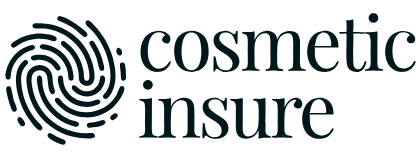Polynucleotides: The Secret to Radiant Menopausal Skin

The Power of Polynucleotides for Menopausal Skin Menopause brings significant changes to a woman’s body, and the skin often reflects those changes. With the decline in estrogen, many women experience dryness, loss of elasticity, wrinkles, and thinning skin. While these changes are natural, they can feel frustrating. However, a groundbreaking solution is emerging – polynucleotides, an innovative treatment that works beneath the surface to help rejuvenate menopausal skin. Understanding Menopause and Its Effects on Skin During menopause, declining estrogen levels lead to a range of skin issues. Collagen, which is essential for maintaining skin firmness and elasticity, decreases sharply. This results in sagging, fine lines, and deeper wrinkles. The skin also becomes drier and less able to retain moisture, while cell turnover slows, contributing to a dull and uneven complexion. What Are Polynucleotides? Polynucleotides are chains of nucleotides, the building blocks of DNA, that are now being used to repair and regenerate skin at a cellular level. When introduced into the skin via injections, polynucleotides stimulate the production of collagen, improve skin elasticity, and promote tissue repair. This makes them especially effective for addressing the signs of aging associated with menopause. Key Benefits of Polynucleotide Treatments for Menopausal Skin Stimulating Collagen Production Collagen loss during menopause can lead to skin sagging and wrinkles. Polynucleotide injections help by activating fibroblasts, the cells responsible for collagen synthesis. This stimulation restores collagen levels, which in turn tightens and firms the skin, reducing the appearance of fine lines and deeper wrinkles. Boosting Skin Hydration Menopausal skin often suffers from increased dryness as it loses its ability to retain moisture. Polynucleotide treatments can enhance the skin’s ability to hold onto moisture by strengthening its structure from the inside. This results in more hydrated, supple, and plump skin, which helps reduce discomfort and roughness. Promoting Skin Regeneration As skin cell turnover slows with age, menopausal skin can become thinner and more prone to damage. Polynucleotides promote the regeneration of new skin cells, which helps to thicken and fortify the skin’s structure. This accelerated repair process also helps fade fine lines and improves the overall texture and tone of the skin. Improving Skin Elasticity The loss of elasticity is a common concern for women going through menopause, especially around the jawline, neck, and cheeks. Polynucleotides work to boost elastin production, which gives the skin its ability to stretch and bounce back. The result is firmer, more toned skin with improved definition and reduced sagging. Soothing and Calming the Skin Menopausal skin can become more sensitive and reactive. Polynucleotides have natural anti-inflammatory properties that help to calm irritation and reduce redness, making them an ideal choice for skin that may be prone to sensitivity during menopause. Polynucleotide Injection Treatments: What to Expect Polynucleotides are primarily administered through injectable treatments, such as mesotherapy or skin boosters. These treatments deliver the polynucleotides directly into the deeper layers of the skin, allowing them to work where they’re most needed. Mesotherapy with Polynucleotides Mesotherapy involves the injection of small amounts of polynucleotides into the middle layers of the skin. This stimulates collagen production, promotes hydration, and encourages tissue regeneration. The procedure is relatively quick, with minimal discomfort and downtime. Most women notice an improvement in skin texture and hydration after just one session, though a series of treatments is recommended for optimal results. Polynucleotide Skin Boosters Polynucleotide skin boosters are another injectable option designed to improve overall skin quality by delivering hydrating and regenerative ingredients directly into the dermis. These boosters help to enhance the skin’s structure, improve elasticity, and create a firmer, more youthful appearance. Over time, the skin becomes stronger and more resistant to the effects of aging. Is Polynucleotide Treatment Right for You? If you are experiencing the skin-related effects of menopause, polynucleotide treatments may offer the solution you’ve been searching for. The benefits of increased collagen production, improved elasticity, enhanced hydration, and faster skin regeneration make these treatments a powerful option for rejuvenating menopausal skin. Polynucleotide injections are suitable for most skin types and carry minimal risk of side effects. They offer a natural way to revitalize your skin without the need for invasive procedures or long recovery times. Conclusion: Embrace Radiant Skin During Menopause Polynucleotide treatments are changing the way we approach skin care for menopausal women, providing an innovative and effective solution for combating the signs of aging. By working at the cellular level, polynucleotides offer deep rejuvenation, helping to restore the youthful glow and firmness that may have faded during menopause. If you’re ready to rejuvenate your skin and regain your confidence, consider polynucleotide injections as a treatment option. Consult with our qualified Doctor to see if this revolutionary treatment can help you achieve your skin goals during this transformative time.
How Does Endolift Treatment Work to Rejuvenate Your Skin?
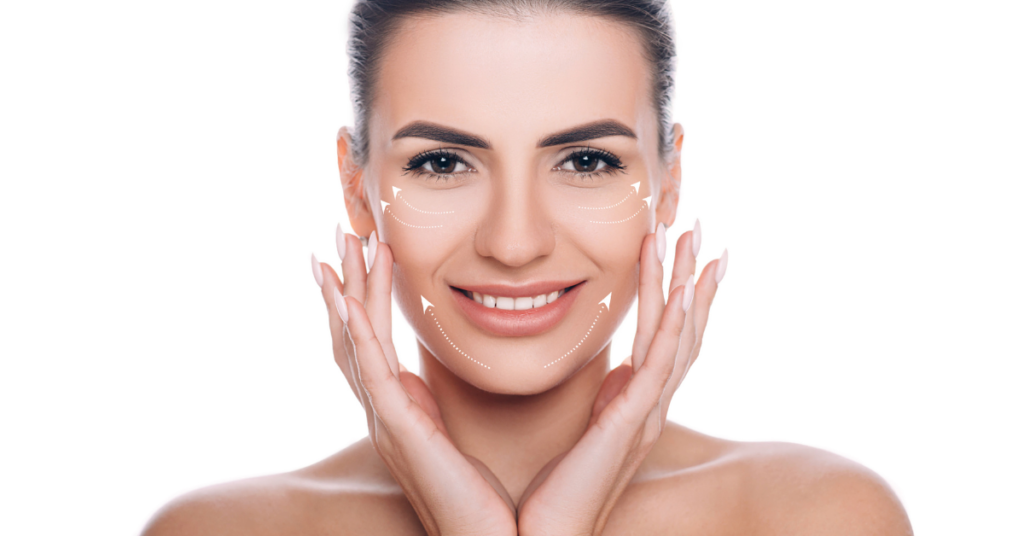
Just as Prometheus brought fire to mankind, Endolift brings the power of laser energy beneath your skin’s surface to restore its youthful glow. By inserting thin optical fibres, this minimally invasive procedure targets collagen production, firming up your skin and reducing wrinkles. You might wonder how this advanced technique can achieve such remarkable results with minimal downtime and local anaesthesia. If you’re curious about transforming your skin without going under the knife, understanding the science and benefits behind it could be the key to revealing a rejuvenated appearance. Key Takeaways – Endolift uses a thin optical fibre to deliver laser energy beneath the skin, targeting subdermal tissues for rejuvenation. – The laser energy stimulates collagen production, enhancing skin firmness and elasticity. – Controlled thermal damage triggers a natural collagen response, improving skin texture and reducing sagging and wrinkles. – The procedure is minimally invasive, performed under local anaesthesia with minimal downtime for quick recovery. – Patients experience immediate skin tightening and long-term improvements in firmness and texture due to ongoing collagen stimulation. What Is Endolift? Endolift is a minimally invasive laser treatment designed to tighten and rejuvenate the skin. It utilises advanced Endolift technology, which involves inserting a thin optical fibre beneath the skin. This fibre delivers laser energy directly to targeted areas, promoting collagen production and skin tightening. As an Endolift candidate, you should ideally have mild to moderate skin laxity and be looking for a non-surgical alternative to traditional facelifts. This treatment is suitable for various facial zones, including the lower eyelids, jawline, and neck. It’s also effective for body areas where skin sagging occurs, such as the inner arms and abdomen. Endolift technology works by precisely heating the deeper layers of your skin, causing immediate contraction of collagen fibres. Over time, this stimulates the production of new collagen, leading to long-lasting skin tightening and improved elasticity. The procedure is typically performed under local anaesthesia, and most patients experience minimal downtime. Clinical studies have shown significant improvements in skin firmness and texture following Endolift treatments. If you’re looking to rejuvenate your skin without the risks and recovery time associated with surgery, Endolift could be a viable option. The Science Behind Endolift At its core, the science behind Endolift hinges on the precise application of laser energy to subdermal tissues. This cutting-edge treatment uses a special laser fibre to target the deeper layers of your skin, stimulating collagen production and enhancing skin elasticity. The laser energy generates heat, which triggers a natural response in your body to produce more collagen, the protein responsible for keeping your skin firm and youthful. Here’s how it works: Collagen Stimulation: The laser energy heats the subdermal tissues, causing controlled thermal damage. This prompts your body to repair the area by producing new collagen fibres, which improves skin texture and firmness. Enhanced Skin Elasticity: By stimulating collagen production, the treatment also boosts skin elasticity. This results in tighter, more resilient skin, reducing sagging and wrinkles. Non-Invasive Precision: Endolift targets specific areas without damaging the surrounding tissues. This precision guarantees that you get ideal results with minimal downtime and fewer risks compared to traditional surgical methods. Treatment Procedure The treatment procedure for Endolift begins with a thorough evaluation by a certified specialist to determine your suitability for the procedure. During this assessment, the specialist will review your medical history and skin condition to guarantee you’re a good candidate. Once deemed suitable, you’ll undergo treatment preparation, which involves cleansing the targeted areas and marking entry points for the laser fibre. Local anaesthesia is administered to guarantee comfort. The specialist inserts a micro-optical fibre beneath your skin, which delivers laser energy to the subdermal layers. This energy stimulates collagen production and tightens the skin, resulting in a rejuvenated appearance. The entire procedure typically lasts between 30 to 60 minutes, depending on the treatment areas. After the treatment, you’ll receive detailed post treatment care instructions to optimise recovery and results. These guidelines usually include avoiding direct sunlight, strenuous activities, and following a prescribed skincare regimen. Mild swelling or redness may occur but generally subsides within a few days. Benefits of Endolift Following the treatment procedure, understanding the benefits of Endolift can help you appreciate its value. Endolift offers a non-invasive solution for skin tightening and collagen stimulation, which are essential for skin rejuvenation. By utilising laser energy, Endolift precisely targets the subdermal layers, promoting collagen production and enhancing skin elasticity. Here are the top benefits you can expect: Immediate Skin Tightening: The laser energy contracts existing collagen fibres, providing an immediate skin tightening effect. This gives you a noticeably firmer appearance right after the treatment. Long-Term Collagen Stimulation: Over time, the stimulated fibroblasts produce new collagen, leading to sustained improvements in skin texture and elasticity. This ongoing collagen stimulation guarantees that your skin continues to improve even months after the procedure. Minimal Downtime: Unlike surgical options, Endolift requires minimal recovery time. You can resume your daily activities almost immediately, making it a convenient option for those with busy lifestyles. Incorporating these benefits into your skincare routine can offer a thorough approach to combating signs of ageing. Expected Results When considering Endolift, you can expect precise and measurable improvements in skin firmness and texture. This innovative treatment utilises laser energy to stimulate collagen production and elastin remodelling, delivering substantial skin improvements. Clinical studies indicate that most patients observe significant tightening and lifting effects within a few weeks post-treatment. The expected outcomes include a more contoured facial structure and improved skin elasticity. The procedure targets sagging areas, reducing the appearance of fine lines and wrinkles. You’ll likely notice enhanced skin smoothness and a more even tone, as the treatment also addresses minor pigmentation issues. Endolift’s efficacy is well-documented. Research shows that patients typically achieve a 20-30% improvement in skin tightness. These results
When Is the Right Time to Remove a Skin Tag or Mole?
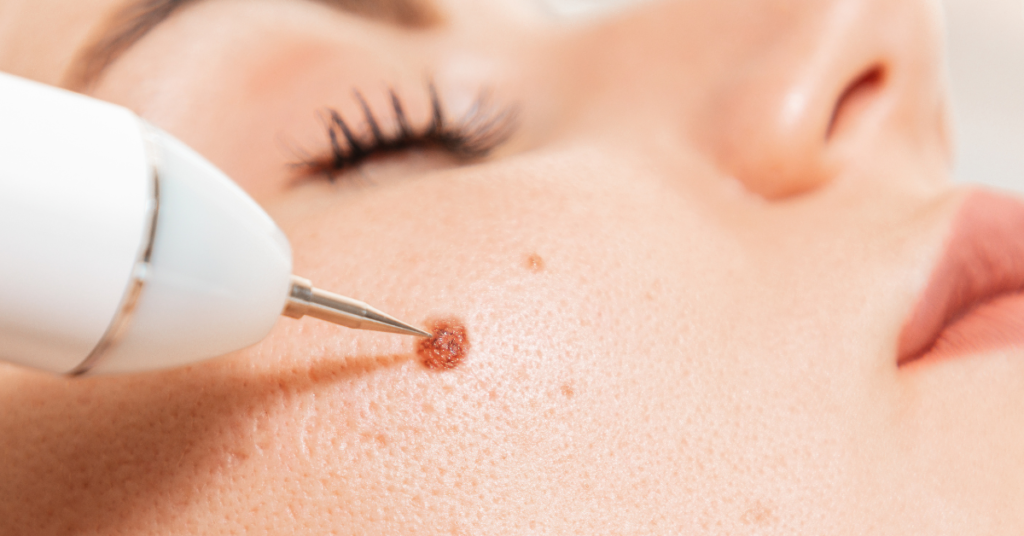
Deciding when to remove a skin tag or mole can be tricky, especially if you’re unsure about the signs to watch for. If you notice changes in size, colour, or shape, it might be time to reflect on removal. These changes would indicate potential health concerns. On the other hand, if a lesion causes irritation, discomfort, or affects your self-esteem, seeking removal could improve your quality of life. Regular self-examinations and consultations with a dermatologist are essential. But how do you know which professional removal methods are right for you? Let’s explore your options. Key Takeaways – Removal is advised if the mole or skin tag shows rapid growth or significant size changes. – Consider removal if the lesion changes colour, especially if it turns dark or multi-colored. – Seek medical evaluation if the skin tag or mole bleeds or oozes without apparent cause. – Persistent itching, pain, or irritation from the lesion indicates it may need to be removed. – A mole with irregular shape or asymmetrical borders should be examined and potentially removed. Cosmetic Reasons Considering the cosmetic reasons for removing a skin tag or mole, it’s essential to understand the impact on one’s self-esteem and appearance. Skin aesthetics play a significant role in how individuals perceive themselves and are perceived by others. If a skin tag or mole is located in a prominent area such as the face or neck, it can lead to self-consciousness, affecting social interactions and confidence levels. Cosmetic procedures aimed at removing these skin imperfections are generally safe and effective. Techniques such as cryotherapy, laser removal, and surgical excision are commonly used. These methods not only improve skin aesthetics but also provide lasting results with minimal scarring. Clinical studies have shown that individuals who undergo these procedures often experience a boost in self-esteem and overall satisfaction with their appearance. It’s important to consult with a dermatologist to assess the best method for removal based on the size, location, and type of skin tag or mole. This guarantees that the procedure is tailored to your specific needs, maximising both cosmetic and psychological benefits. By addressing these concerns through professional cosmetic procedures, you can enhance your skin aesthetics and overall quality of life. Irritation and Discomfort While cosmetic reasons play an important role in the decision to remove a skin tag or mole, irritation and discomfort often necessitate medical intervention. Friction from clothing, jewellery, or even daily activities can exacerbate these skin lesions, leading to inflammation and potential secondary infections. When you experience persistent irritation, it’s essential to consult a healthcare provider to discuss removal options. Self care practices are vital in managing irritated skin tags or moles. Applying a gentle, non-irritating moisturiser can help reduce friction and soothe the skin. Additionally, wearing loose-fitting clothing can minimise contact and irritation. However, these measures might only offer temporary relief. Chronic discomfort or irritation can greatly impact your overall skin health. Prolonged inflammation not only causes pain but also increases the risk of infection. If you notice that a skin tag or mole consistently causes discomfort despite your self care efforts, it’s time to seek professional advice. A dermatologist can provide evidence-based treatments such as cryotherapy, excision, or laser removal, ensuring the best outcome for your skin health. Don’t ignore signs of irritation. Addressing these issues promptly can prevent further complications and improve your quality of life. Changes in Size One of the most concerning changes in a skin tag or mole is an increase in size. Monitoring changes in size progression is essential because it can be an indicator of underlying health issues, including malignancy. Clinically, a rapid or continuous increase in size warrants a thorough evaluation by a healthcare professional. You should regularly examine your skin tags and moles, noting any size progression. Use a ruler or take pictures monthly to document any changes. If you observe considerable growth, schedule an appointment with a dermatologist. They may perform a biopsy to rule out conditions like melanoma, which presents with asymmetric borders and rapid growth. Evidence suggests that size progression, particularly when accompanied by other symptoms like bleeding or itching, is a red flag. A study published in the Journal of the American Academy of Dermatology highlights that early detection and removal of suspicious moles can greatly improve outcomes. Don’t ignore changes in size, even if they seem minor. Early intervention is key. By actively monitoring changes and consulting with a healthcare provider, you can guarantee timely and appropriate management, safeguarding your health. Colour Alterations Over time, alterations in the colour of a skin tag or mole can signal important health concerns. You should pay close attention to any changes in hue, as these could indicate underlying issues affecting your skin health. For example, a mole that darkens or develops multiple colours, such as shades of brown, black, red, or blue, might be a red flag. These colour meanings often point to melanocytic activity, which could be benign or malignant. Don’t ignore a mole that suddenly becomes lighter or loses pigment. This depigmentation might suggest regression, a phenomenon sometimes seen in malignant melanomas. Clinicians use the “ABCDE” rule to assess moles: Asymmetry, Border irregularity, Color variation, Diameter over 6mm, and Evolution. Colour variation, in particular, is a vital indicator that warrants professional evaluation. It’s essential to monitor your skin regularly and consult a dermatologist if you notice any colour changes. Early detection and intervention can greatly improve outcomes. Shape Modifications When a skin tag or mole starts shifting its shape, it’s time to pay attention. Shape variations can be a critical indicator of underlying health issues. While some changes might be benign, others could signal more serious conditions such as melanoma. Here are some key points to take into account: Asymmetry: If one half of the mole or skin tag doesn’t match the other half,
What Makes Endolift Treatment Different From Traditional Facelifts?
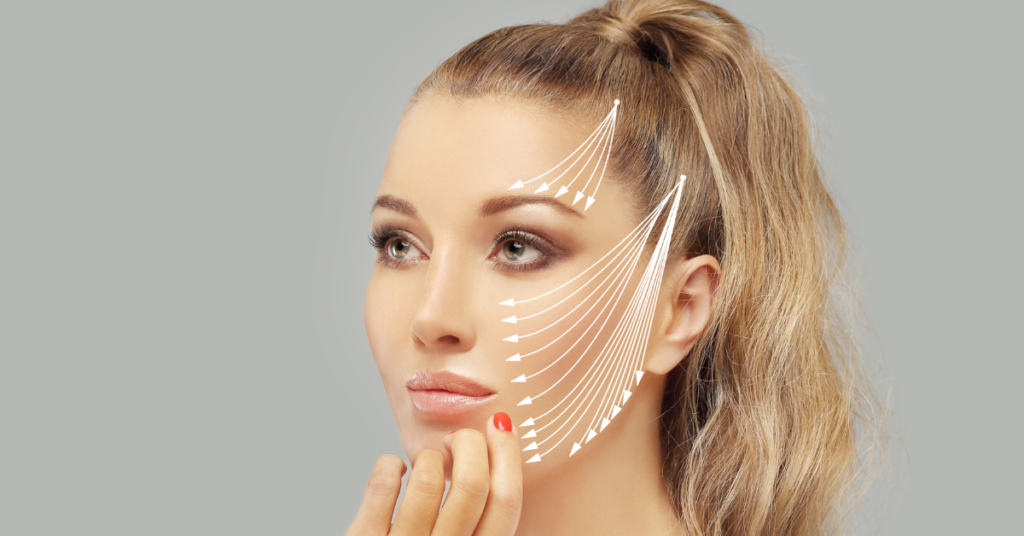
When you think about traditional facelifts involving extensive surgery and long recovery periods, Endolift treatment stands out as a minimally invasive alternative that uses advanced laser technology with no surgical incisions. You might wonder how this outpatient procedure manages to offer targeted skin tightening and collagen stimulation while allowing you to resume daily activities within days. By understanding the differences in downtime, risk profiles, and overall cost, you’ll discover why Endolift could be the more accessible option, especially for those seeking subtle enhancements. So, what makes Endolift an attractive choice for younger individuals? Key Takeaways – Endolift is minimally invasive, requiring small incisions and localised treatments, reducing downtime and associated risks. – Endolift utilises advanced laser technology for precision targeting and collagen stimulation, minimising tissue damage. – Recovery time for Endolift is significantly shorter, with patients resuming daily routines within days. – Endolift treatments generally have lower complication rates and use local anaesthesia, enhancing safety. – Endolift results last 1-2 years, while traditional facelifts offer more enduring effects up to 10 years. Minimally Invasive Procedure When it comes to facial rejuvenation, the term “minimally invasive procedure” often stands out, especially in comparison to traditional facelifts. These procedures, like Endolift, offer significant advantages regarding patient comfort and treatment accessibility. Unlike traditional facelifts, which involve extensive surgical intervention, minimally invasive procedures require only small incisions and localised treatments. This means you can achieve rejuvenated skin with less downtime and fewer risks. Patient comfort is a primary concern with any cosmetic procedure. With Endolift, you’ll experience minimal discomfort, as the procedure is typically performed under local anaesthesia. This reduces the need for general anaesthesia, which can carry higher risks and longer recovery times. The technique involves the use of micro-fibers that are inserted into the subcutaneous layer of the skin, stimulating collagen production and tightening tissue without extensive cutting or stitching. Treatment accessibility is another key benefit. Minimally invasive procedures can often be performed in an outpatient setting, making them more accessible to a broader range of patients. You’ll find that these procedures aren’t only quicker but also more cost-effective than traditional facelifts, allowing for facial rejuvenation without the extensive burden of surgery. Advanced Laser Technology Another compelling aspect of Endolift is its use of advanced laser technology, which sets it apart from traditional facelifts. By utilising a highly specialised laser, Endolift offers unparalleled laser precision, targeting specific tissues to achieve ideal results. The laser’s wavelength is meticulously calibrated to stimulate collagen production and promote skin tightening, enhancing the overall treatment effectiveness. Unlike traditional facelifts, which involve extensive surgical procedures, Endolift leverages this cutting-edge laser to deliver energy directly to the subdermal layers. This targeted approach minimises damage to surrounding tissues and focuses on areas that require rejuvenation. The laser’s precision enables practitioners to contour and lift the skin with remarkable accuracy, providing natural-looking results without the need for extensive recovery time. Furthermore, the laser technology used in Endolift allows for real-time monitoring and adjustments during the procedure. This guarantees that the treatment is tailored to your specific needs, enhancing its effectiveness and safety. You’ll benefit from a more personalised approach to facial rejuvenation, with outcomes that are both immediate and long-lasting. By embracing advanced laser technology, Endolift redefines facial treatments, offering a sophisticated alternative to traditional surgical facelifts. No Surgical Incisions In contrast to traditional facelifts that require surgical incisions, Endolift eliminates the need for such invasive methods. This non-surgical procedure uses advanced laser technology to target and tighten skin, promoting collagen production without the necessity for cuts or stitches. As a result, you experience a significant enhancement in patient comfort, avoiding the pain and potential complications associated with surgical interventions. With Endolift, treatment customization is another key advantage. The procedure allows for precise targeting of specific facial areas, giving you the ability to address your unique aesthetic concerns. Whether it’s sagging jowls, under-eye bags, or loose skin around the neck, the laser fibres can be adjusted to your needs, optimising results while maintaining safety. This tailored approach contrasts sharply with the more generalised techniques often used in traditional facelifts. Moreover, the absence of surgical incisions minimises the risk of infection and scarring, providing a safer, more comfortable experience. You won’t have to worry about the lengthy and often painful recovery periods associated with conventional facelifts. Instead, Endolift offers a streamlined, efficient solution designed to enhance your appearance without the drawbacks of surgical procedures. Reduced Downtime Endolift treatment greatly reduces downtime compared to traditional facelifts. Unlike conventional facelifts, which may require weeks of recovery, Endolift offers a minimally invasive alternative with notably shorter healing periods. Patients often return to their daily routines within a few days, making it an appealing option for those with demanding schedules. Patient testimonials frequently highlight the treatment’s efficiency and minimal disruption to their lives. You’ll find that individuals who’ve undergone Endolift report manageable post-procedure discomfort and rapid improvements in facial contour. Such feedback is essential for setting realistic treatment expectations and reassuring you of the low-impact nature of the procedure. The technique uses laser fibre to stimulate collagen production and melt excess fat, resulting in tighter, more youthful skin. This targeted approach minimises tissue trauma and accelerates recovery time. You can expect minor swelling or bruising, which typically resolves quickly, allowing you to resume normal activities almost immediately. Risk and Safety Profile When considering any aesthetic procedure, understanding the risk and safety profile is paramount. Endolift treatment, a modern, minimally invasive technique, generally boasts lower complication rates compared to traditional facelifts. With Endolift, you’re not subjected to extensive incisions, reducing the risk of infection, scarring, and prolonged recovery times. On the other hand, traditional facelifts involve more extensive surgical intervention, which inherently carries higher risks such as hematoma, nerve damage, and deep vein thrombosis. Safety measures are integral to both procedures but differ in
How Effective Is Mole Removal in Reducing Skin Cancer Risk?
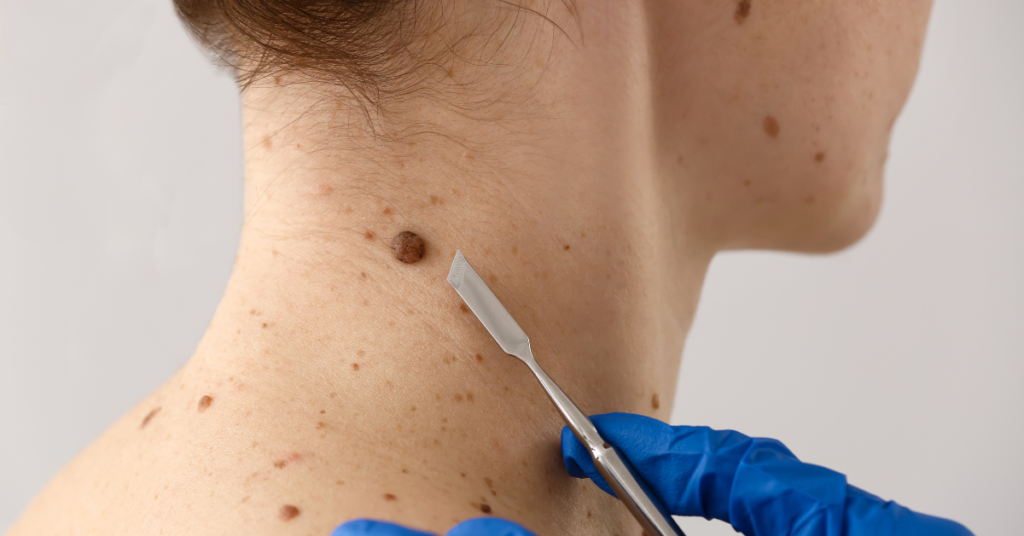
When considering the effectiveness of mole removal in reducing skin cancer risk, you should first understand the types of moles that pose a threat. Spotting suspicious moles early and opting for procedures like excisional surgery can indeed lower potential risks. However, you might wonder if these methods are foolproof and what role accurate diagnosis plays in the overall strategy. Are there more preventive measures you could take beyond just removing moles? Key Takeaways – Mole removal is highly effective when suspicious moles are accurately diagnosed and excised early. – Excisional and Mohs surgeries offer precise removal, minimising the risk of cancerous cells remaining. – Regular follow-up dermatologic check-ups post-removal are crucial for monitoring and reducing skin cancer risk. – ABCDE criteria and biopsy confirmation prior to removal ensure the identification of high-risk moles. – Early intervention through mole removal significantly reduces the likelihood of moles progressing to skin cancer. Understanding Moles Although moles are a common dermatologic occurrence, understanding their characteristics is essential for effective monitoring and management. Moles, or nevi, typically present as small, pigmented lesions on the skin. Their characteristics include symmetry, uniform colour, distinct borders, and a diameter usually less than 6mm. However, any deviation from these traits warrants closer attention. When it comes to mole monitoring, you should perform regular self-examinations using the ABCDE criteria: Asymmetry, Border irregularity, Color variation, Diameter over 6mm, and Evolving shape or size. This evidence-based approach helps you identify atypical moles that might require professional evaluation. Dermatologists often recommend photographic documentation for mole monitoring, especially if you have numerous moles or a history of atypical nevi. High-resolution images can serve as a baseline, allowing you and your healthcare provider to track any changes over time. If you notice any new symptoms such as itching, bleeding, or rapid growth, seek medical advice immediately. Types of Skin Cancer Spotting atypical moles early is important, as they can sometimes be precursors to more severe skin conditions. Among the various types of skin cancer, understanding the differences is essential for effective prevention and treatment. The most dangerous form is melanoma. There are several melanoma types, including superficial spreading melanoma, which is the most common and often appears as a flat or slightly raised discoloured patch with irregular borders. Another type, nodular melanoma, presents as a rapidly growing bump that can be black, blue, or red. Basal cell carcinoma (BCC) is the most common skin cancer but also the least aggressive. BCCs often manifest as pearly or waxy bumps, usually on sun-exposed areas like the face or neck. They rarely metastasize but can cause significant local damage if left untreated. Squamous cell carcinoma (SCC) is another prevalent skin cancer, often arising from prolonged sun exposure. SCCs appear as rough, scaly patches or nodules that can become crusted or bleed. The Procedure of Mole Removal Mole removal, an important dermatological procedure, involves excising suspicious or bothersome moles to prevent potential malignancies and improve skin health. To begin, your dermatologist will evaluate the mole using dermatoscopy to determine the best approach. Several surgical techniques are employed based on the mole’s characteristics and location. For superficial moles, shave excision is a common method. Here, the dermatologist uses a scalpel to shave the mole flush with your skin. For deeper or potentially malignant moles, an elliptical excision might be used. This involves cutting around the mole and removing a margin of healthy tissue to guarantee complete excision. Occasionally, a punch biopsy, which uses a circular blade to remove a cylindrical core of skin, is utilised for smaller moles. Post-procedure, the healing process is vital. Your dermatologist will likely provide specific wound care instructions to minimise infection risk and promote ideal healing. Typically, the area will heal within one to two weeks, though it may take longer depending on the mole’s size and depth. Follow-up appointments guarantee proper healing and evaluate if further treatment is necessary. Adhering to these guidelines will help maintain skin integrity and reduce complications. Effectiveness of Mole Removal The effectiveness of mole removal hinges on several key factors, including the accuracy of the initial diagnosis and the chosen surgical technique. First, identifying mole characteristics is vital. Dermatologists often use the ABCDE criteria—Asymmetry, Border irregularity, Color variation, Diameter over 6mm, and Evolving shape—to assess malignancy risk. A biopsy, if warranted, confirms whether a mole is benign or malignant. This step guarantees that only moles with suspicious characteristics are targeted for removal, minimising unnecessary procedures. Once a mole is identified for removal, the surgical technique plays a notable role. Methods like excisional surgery or Mohs surgery offer high precision and efficacy. Excisional surgery involves removing the mole along with a margin of healthy skin, which is particularly effective for potentially malignant moles. Mohs surgery, often reserved for confirmed skin cancers, allows for layer-by-layer removal and immediate microscopic examination, guaranteeing complete excision while sparing healthy tissue. Post-removal skin monitoring is essential for long-term effectiveness. Regular dermatologic check-ups help identify new moles or changes in existing ones, providing an ongoing defence against skin cancer. Alternatives to Mole Removal While surgical removal of moles remains a highly effective method, various non-surgical alternatives also warrant consideration, particularly for benign moles or patients seeking less invasive options. Here are some evidence-based alternatives you might explore: Topical Treatments: Prescription creams containing imiquimod or fluorouracil can be applied to the mole under medical supervision. These agents work by stimulating the immune system to target abnormal cells. Cryotherapy: This method involves freezing the mole with liquid nitrogen, causing the abnormal tissue to die and eventually fall off. It’s less invasive than surgical removal and can be effective for superficial moles. Laser Therapy: Using concentrated light, laser therapy targets pigmented cells in the mole. It’s particularly beneficial for flat moles and those in cosmetically sensitive areas. Home Remedies and Monitoring: While home
Are Skin Tags Harmful, and When Should You Consider Removal?
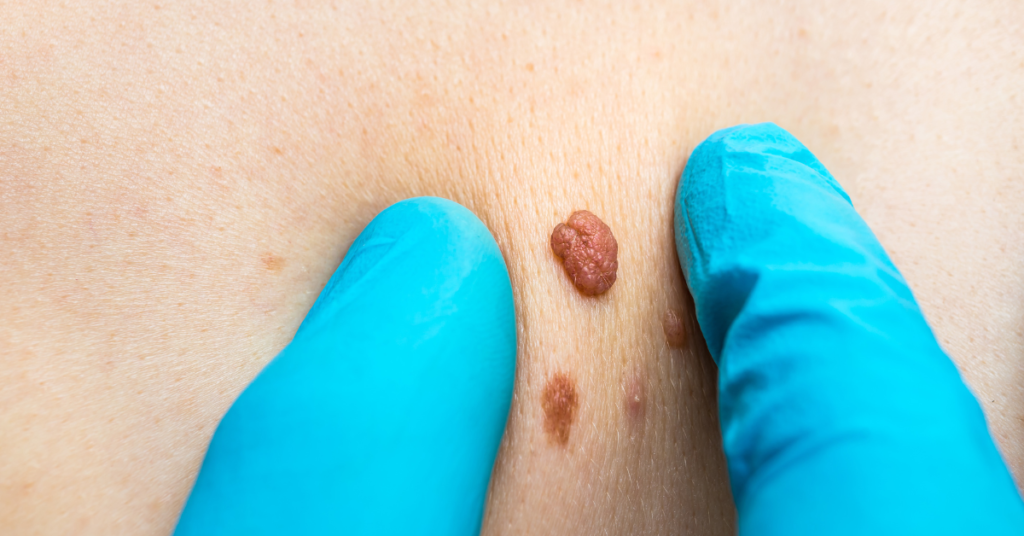
You might have noticed those little skin surprises that seem to appear out of nowhere. While skin tags are typically harmless and non-cancerous, they can become quite a nuisance, especially in areas where clothing rubs against your skin. It’s essential to keep an eye on any rapid changes in size, colour, or sensation, as these could be signs of something more serious. But when should you actually consider having them removed? The answer isn’t always straightforward, and understanding the nuances can help you make an informed decision. Key Takeaways – Skin tags are generally benign and pose no serious health risks. – Removal should be considered if skin tags cause pain, bleeding, or irritation. – Rapid changes in size, colour, or shape warrant medical evaluation. – Cosmetic concerns may justify removal for appearance improvement. – Home remedies exist, but professional consultation ensures safety and effectiveness. What Are Skin Tags? Skin tags, also known as acrochordons, are small, benign growths that typically form in areas where the skin folds, such as the neck, armpits, groyne, and eyelids. These growths are generally harmless and don’t cause any pain or discomfort. However, it’s important to recognize the different skin tag types and their appearance to differentiate them from other skin conditions. Skin tags usually present as soft, flesh-coloured or slightly darker protrusions that hang off the skin by a thin stalk, known as a peduncle. They can vary in size from a few millimetres to a couple of centimetres. The most common skin tag types include solitary skin tags, which appear alone, and clustered skin tags, where multiple tags form in a concentrated area. Causes of Skin Tags Understanding the underlying causes of skin tags can help you manage and prevent their occurrence. Skin tags, medically known as acrochordons, are benign growths that often develop due to a combination of risk factors and genetic predisposition. One primary factor is friction; areas where your skin rubs together or against clothing are more susceptible. This explains why they’re common in overweight individuals, where skin folds create more friction. Hormonal changes also play a significant role. Pregnant women, for instance, often develop skin tags due to hormonal fluctuations. Insulin resistance, commonly seen in people with diabetes, has been linked to the formation of these growths as well. Genetic predisposition can’t be ignored. If your family members have skin tags, you’re more likely to develop them too. This genetic link suggests that some people are inherently more prone to these benign tumours. Age is another factor; as you age, your skin’s elasticity decreases, making it more prone to forming tags. While these causes don’t make skin tags harmful, understanding them can aid in prevention and management. Awareness of these risk factors can help you take steps to minimise their occurrence. Common Areas for Skin Tags Given the various causes of skin tags, it’s important to know where they’re most likely to appear. Skin tags, or acrochordons, commonly develop in areas where your skin experiences friction. This can be due to skin rubbing against skin or clothing. Typical skin tag locations include the neck, armpits, under the breasts, and the groyne area. These are high-friction zones that can lead to the formation of these benign growths. You might also find skin tags on your eyelids, which is another sensitive area subject to frequent movement and friction. Additionally, skin tags can appear on the chest, back, and even the buttocks, especially if you have tight-fitting clothing that causes constant rubbing. Skin tag characteristics typically include small, flesh-coloured or slightly darker growths that hang off the skin by a thin stalk, known as a peduncle. They’re generally soft to the touch and moveable. While they vary in size, most skin tags are only a few millimetres in diameter, though some can grow larger. Understanding these common areas for skin tags can help you identify them early and consult your healthcare provider if you have concerns. Are Skin Tags Harmful? You might wonder if these small growths warrant concern, but rest assured, skin tags are generally harmless. They’re benign, meaning they don’t pose any serious health risks. Many skin tag myths suggest that these growths might be cancerous or contagious, but that’s not the case. Their appearance is usually due to friction from skin rubbing against skin or clothing, rather than any underlying health issue. While skin tags don’t typically present any health concerns, there are some situations where they might cause discomfort. For instance, if a skin tag is in an area that experiences frequent irritation, such as around the neck or underarms, it might become red or sore. Despite this, the skin tag risk remains minimal, as these growths don’t evolve into malignant forms. It’s important to note that the presence of skin tags doesn’t indicate a need for medical alarm. They’re quite common and affect a significant portion of the population. Knowing the facts can help dispel skin tag myths and reduce unnecessary worry. Fundamentally, while they may be a cosmetic nuisance, skin tags themselves aren’t harmful. Symptoms to Watch For Although skin tags are generally benign, it’s vital to recognize symptoms that might warrant closer attention. Understanding symptom identification is significant in guaranteeing your skin remains healthy. Skin tags are usually small, soft, and flesh-coloured. However, changes in their characteristics can signal potential issues. Here are key symptoms to watch for: – Rapid Growth: If a skin tag suddenly increases in size, it could indicate an underlying problem. – Colour Changes: A shift in colour, such as darkening or becoming red, may suggest irritation or other complications. – Pain or Bleeding: If a skin tag becomes painful or starts to bleed, it’s a sign that you should monitor it closely. Identifying these symptoms can help you determine if further action is
Can Endolift Treatment Help With Sagging Skin and Fine Lines?
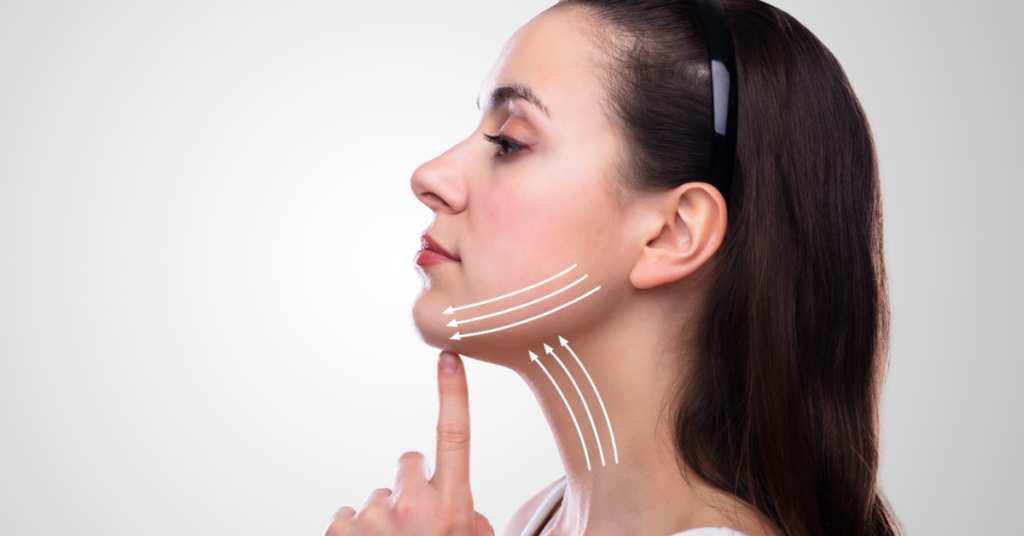
Did you know a minimally invasive procedure using micro-optical fibre technology can effectively tackle sagging skin and fine lines? Endolift treatment stimulates collagen production and boosts skin elasticity, offering noticeable results right after the session. If you’re dealing with mild to moderate skin sagging and want a youthful appearance without going under the knife, this might be the solution you’ve been seeking. But how exactly does Endolift work, and what should you expect during and after the procedure? There’s more to uncover about this innovative treatment and its benefits. Key Takeaways – Endolift effectively treats sagging skin and fine lines using minimally invasive laser technology. – The procedure promotes collagen remodelling and neocollagenesis, enhancing skin elasticity and firmness. – Immediate results are seen post-treatment, with improvements in skin texture and tone. – Minimal downtime and low risk of complications make it a favourable option. – The treatment targets areas like the face, neck, arms, and abdomen for comprehensive rejuvenation. Understanding Endolift Endolift, a minimally invasive laser-based procedure, offers a cutting-edge solution for sagging skin by employing advanced micro-optical fibres. This innovative approach targets deep layers of the skin, promoting tissue retraction and stimulating collagen production. By utilising endolift technology, you can achieve more defined facial contours and reduce skin laxity without the need for surgical intervention. As a potential endolift candidate, you should understand that this procedure is highly effective for individuals experiencing mild to moderate skin sagging. Ideal candidates typically exhibit early signs of ageing, such as jowls, nasolabial folds, and under-eye bags. Additionally, those who prefer a non-surgical facelift with minimal downtime may find endolift particularly appealing. The procedure isn’t limited to the face; it can also address areas like the neck, arms, and abdomen. The precision of endolift technology guarantees targeted treatment, enhancing the skin’s structural integrity and elasticity. Prior to undergoing the procedure, a thorough consultation with a qualified practitioner is crucial to determine your suitability. They’ll assess your medical history, skin condition, and aesthetic goals to develop a personalised treatment plan. With its proven efficacy and safety profile, endolift provides a scientifically-backed option for rejuvenating your appearance. How Endolift Works To understand how this innovative treatment achieves its remarkable results, it’s important to grasp the underlying mechanics of the endolift procedure. First, endolift utilises a specialised micro-optical fibre, which is inserted under the skin’s surface. This fibre delivers precise laser energy to targeted areas, stimulating the deeper layers of the dermis. The laser energy promotes collagen remodelling, a critical factor in improving skin elasticity. By heating the subcutaneous tissue, the endolift procedure triggers neocollagenesis, the process where new collagen fibres are formed. This increased collagen production helps to tighten and lift sagging skin, addressing both skin laxity and fine lines. Moreover, the thermal effect from the laser also aids in the contraction of existing collagen fibres, further enhancing the skin’s firmness. This dual action on both new and existing collagen guarantees treatment longevity, providing lasting results over time. Additionally, endolift facilitates the breakdown of subdermal fat deposits, which are then naturally eliminated by the body’s lymphatic system. This multi-faceted approach not only refines skin texture but also contours facial and body areas. Therefore, by enhancing skin elasticity and guaranteeing treatment longevity, endolift offers an extensive solution for rejuvenating your skin. Benefits of Endolift One of the standout benefits of endolift is its ability to deliver immediate and noticeable improvements in skin firmness and elasticity. This advanced treatment leverages laser technology to induce collagen stimulation, a pivotal factor in skin rejuvenation. By targeting the subdermal layers, endolift promotes the natural production of collagen and elastin fibres, leading to considerable enhancements in skin texture and tone. – Rapid skin tightening: Witness firmer skin almost immediately due to enhanced collagen fibres. – Minimally invasive procedure: Experience minimal downtime and reduced risk of complications. – Enhanced skin texture: Achieve smoother, more youthful skin through targeted stimulation. – Long-lasting results: Enjoy the benefits of prolonged collagen production for sustained rejuvenation. Clinically, endolift is recognized for its dual role in both immediate tightening and long-term skin rejuvenation. The procedure’s efficacy is supported by evidence illustrating its ability to remodel the extracellular matrix and enhance dermal architecture. Endolift’s precision in targeting specific areas guarantees that you receive customised treatment tailored to your unique skin needs. Ultimately, this results in a revitalised appearance that can considerably boost your confidence without the need for extensive surgical intervention. Sagging Skin Treatment Addressing sagging skin requires a thorough and strategic approach, leveraging cutting-edge technologies and clinical expertise. Endolift, a minimally invasive laser treatment, offers a highly effective solution by targeting the deeper layers of your skin. This procedure utilises laser energy to promote collagen stimulation, which is essential for enhancing skin elasticity. By precisely delivering laser energy, Endolift induces thermal effects that remodel the dermal matrix, resulting in tighter, firmer skin. During the treatment, a micro-optical fibre is inserted into the subcutaneous layer, delivering controlled laser energy. This stimulates fibroblasts, the cells responsible for collagen production, leading to a natural and progressive improvement in skin elasticity. The thermal effect also promotes neocollagenesis—the formation of new collagen fibres—thereby reinforcing the skin’s structural integrity. Furthermore, Endolift’s targeted approach guarantees minimal downtime and reduced risk of complications compared to traditional surgical methods. Its efficacy in collagen stimulation has been substantiated by clinical studies, demonstrating significant improvements in skin firmness and a reduction in skin laxity. By incorporating Endolift into your skincare regimen, you can achieve a more youthful, resilient complexion, effectively addressing the underlying causes of sagging skin. Reducing Fine Lines While Endolift effectively tackles sagging skin, it also offers substantial benefits for reducing fine lines. This advanced treatment enhances your skin’s hydration and boosts collagen production, resulting in a smoother, youthful appearance. By targeting the subdermal layers, Endolift stimulates fibroblasts, the cells responsible for
What Should You Expect During and After Mole Removal?
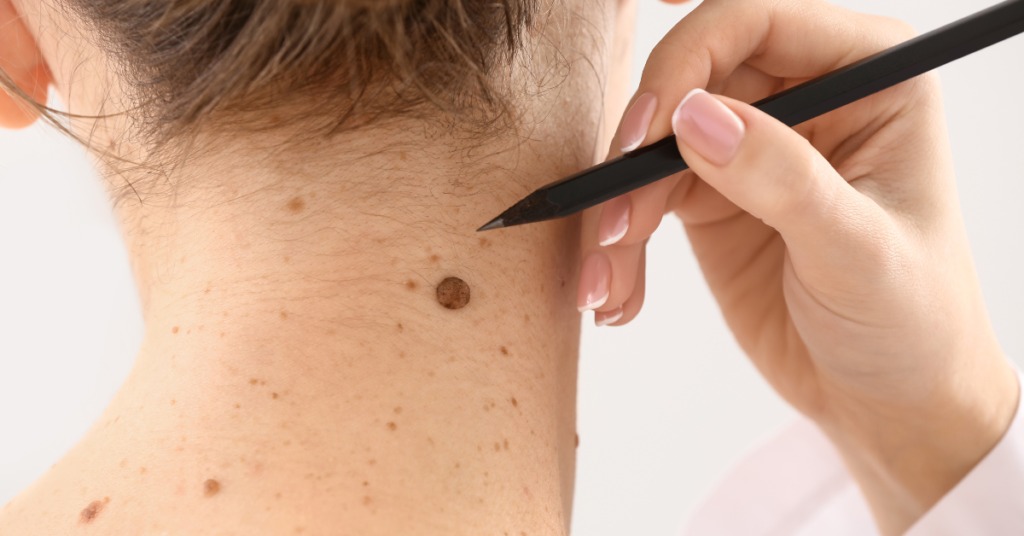
Navigating mole removal is like starting on a journey through a well-charted map. You’ll begin with an initial consultation, where a dermatologist assesses the mole and discusses your options. The procedure itself, whether a surgical excision or laser therapy, involves local anaesthesia to guarantee comfort. Afterward, you’ll need to keep the wound clean and watch for any signs of infection. Healing times can vary, and follow-up appointments are essential to monitor any changes in your skin. Curious about how to manage pain or what long-term care involves? Let’s explore the steps in detail. Key Takeaways – Dermatologists assess mole type and medical history before choosing a removal technique. – Local anaesthetic is administered to numb the area during the procedure. – Post-procedure care includes keeping the wound clean, using prescribed ointments, and monitoring for infection. – Healing time varies but typically takes 1-3 weeks, depending on the removal method. – Regular follow-up visits and skin checks are crucial for monitoring and preventing future skin issues. Initial Consultation During your initial consultation, you’ll meet with a dermatologist to discuss your mole removal options. This meeting is vital for evaluating the types of moles you have and determining the best treatment plan. The dermatologist will begin by conducting a thorough skin evaluation. They’ll examine the size, shape, colour, and texture of your moles to identify whether they’re benign or potentially malignant. Understanding the different mole types is essential in this evaluation process. Common mole types include junctional moles, which appear flat and dark, compound moles, which are slightly raised and lighter in colour, and intradermal moles, which are raised and flesh-coloured. Each type requires a different approach for removal, so accurate identification is key. The dermatologist will also inquire about your medical history, including any family history of skin cancer, to assess your overall risk. This helps in creating a personalised treatment plan tailored to your needs. They’ll explain the various removal techniques, such as surgical excision, laser therapy, or cryotherapy, and discuss the benefits and potential risks associated with each method. Pre-Procedure Preparations Before undergoing mole removal, there are several key preparations you’ll need to make to guarantee a smooth procedure. First, your healthcare provider will conduct a thorough mole assessment. This helps them understand the characteristics of your mole and determine the best removal method for your specific skin type. Different skin types react differently to procedures, so this step is essential. Here’s a checklist to help you prepare: Consultation Review: Revisit the details discussed during your initial consultation to confirm you understand the procedure and aftercare. Medication Disclosure: Inform your doctor about any medications or supplements you’re taking as they may affect the procedure or healing process. Skin Preparation: Follow any specific skin preparation instructions your doctor provides, such as avoiding certain skincare products or sun exposure. Pre-Procedure Instructions: Adhere to any fasting or hydration guidelines given by your healthcare provider. Allergy Check: Confirm you’re not allergic to any materials that will be used during the procedure, such as anaesthetics or antiseptics. The Mole Removal Process The mole removal process typically begins with the administration of a local anaesthetic to numb the area, guaranteeing you won’t feel any discomfort during the procedure. Once the area is numb, your healthcare provider will determine the most appropriate removal technique based on the type of mole you have. There are various mole types, including common moles, atypical moles, and congenital moles. Each type may require a different approach. For instance, a simple shave excision is often used for small, raised moles. In this technique, the mole is carefully shaved off at the skin’s surface. If your mole is flat or suspected to be atypical, a punch biopsy might be employed. This method involves using a small, round blade to remove a core of skin, including the mole and some surrounding tissue. For larger or deeper moles, a full-thickness excision might be necessary. This involves cutting out the mole along with a margin of healthy skin, followed by suturing the wound. After the mole is removed, it’s typically sent to a lab for histopathological examination to rule out malignancy. This step is essential, especially for atypical moles, to safeguard your long-term health. Immediate Post-Procedure Care Your healthcare provider’s immediate post-procedure care instructions are essential to ascertain proper healing and prevent complications. Following these guidelines meticulously will help you manage pain and guarantee peak wound care. Here are the key steps you should take: – Keep the wound clean and dry: Gently clean the area with mild soap and water, then pat it dry. Avoid soaking the wound or exposing it to excessive moisture. – Apply prescribed ointments: Use any topical antibiotics or healing ointments as directed to prevent infection and promote healing. – Change bandages regularly: Replace the dressing daily or more often if it becomes wet or dirty. This helps keep the wound clean and reduces the risk of infection. – Monitor for signs of infection: Watch for redness, swelling, increased pain, or discharge. If you notice any of these symptoms, contact your healthcare provider immediately. – Manage pain effectively: Use over-the-counter pain relievers like acetaminophen or ibuprofen as recommended. Avoid aspirin, as it can increase bleeding. Healing and Recovery Timeline Typically, the healing and recovery timeline for mole removal can vary depending on the method used and individual factors such as your overall health and skin type. For instance, if you’d a surgical excision, it may take about two to three weeks for the wound to heal. On the other hand, laser removal often results in a faster recovery, sometimes within a week. Key healing factors include your body’s natural healing ability and how well you follow post-procedure care instructions. Keeping the area clean and dry, applying prescribed ointments, and avoiding direct sunlight
How Safe Is Skin Tag Removal and What Are the Best Methods?
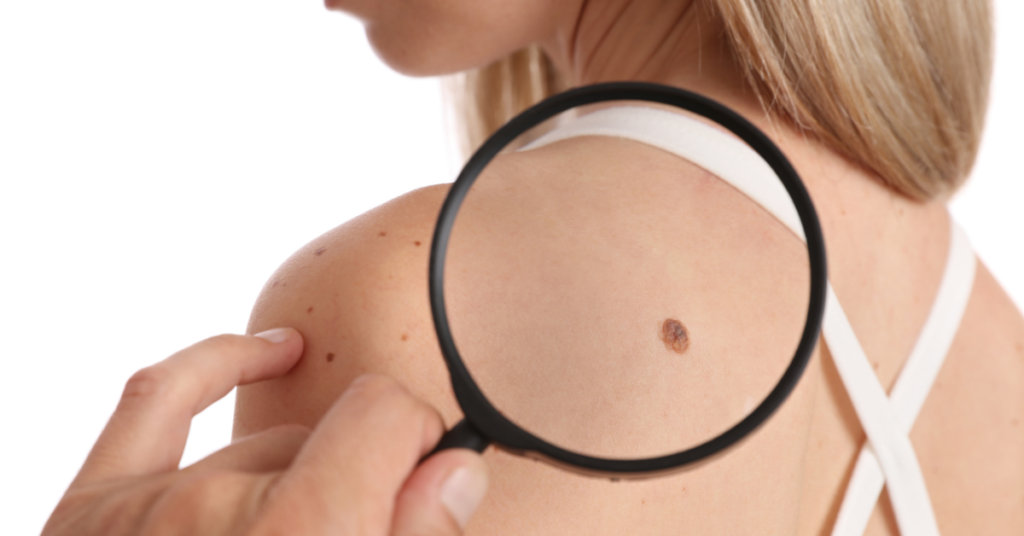
Imagine you’ve discovered a small, benign skin tag on your neck and you’re wondering whether to remove it yourself or seek professional help. Removing skin tags can be safe, but the method you choose plays an essential role in minimising risks like infection or scarring. While professional options like laser treatment and cryotherapy are highly effective, over-the-counter solutions and natural remedies are also available. However, these home methods require caution to avoid skin irritation. So, how do you decide which approach is best for you? Key Takeaways – Professional medical procedures offer high safety and efficacy, minimising risks and providing better outcomes than home methods. – Over-the-counter solutions like salicylic acid and cryotherapy kits are convenient but require caution to avoid skin irritation. – Natural remedies such as tea tree oil and apple cider vinegar lack rigorous clinical evidence and can cause irritation. – Infection prevention is crucial; sterile environments and proper aftercare minimise risks during and after removal. – Laser treatments and professional cryotherapy are precise, quick, and have low scarring risks compared to excision. Understanding Skin Tags Although it might seem like a minor issue, understanding skin tags is vital for making informed decisions about your skin health. Skin tags, or acrochordons, are benign growths commonly found in areas where skin folds, such as the neck, armpits, and groyne. They’re typically small, soft, and flesh-coloured. The exact causes of skin tags aren’t fully understood, but they’re often linked to friction, obesity, diabetes, and hormonal changes, particularly during pregnancy. From a clinical perspective, skin tags are generally harmless. However, they can become irritated or aesthetically displeasing, prompting many to contemplate skin tag removal. It’s important to consult a healthcare professional for an accurate diagnosis, as other skin conditions can mimic skin tags. Professional removal options include cryotherapy, excision, and cauterization, each with its own set of benefits and risks. Evidence suggests these methods are effective, provided they’re performed under sterile conditions by qualified individuals. Understanding the underlying causes and appropriate removal methods guarantees you make the best choices for your skin’s health. Always prioritise accuracy and safety when dealing with skin tag removal to avoid complications. Home Removal Methods When considering skin tag removal, some people explore home removal methods as an alternative to professional treatments. One common approach is the use of natural remedies. For instance, applying tea tree oil, which has antiviral and antifungal properties, may help in drying out the skin tag over time. Another option is apple cider vinegar, known for its acidic nature, which could potentially reduce the tag by breaking down the surrounding tissue. However, it’s essential to exercise caution with natural remedies. They lack rigorous clinical trials, and their efficacy is mostly anecdotal. Additionally, improper application can lead to skin irritation or infection. Lifestyle changes can also play a role in managing skin tags. Maintaining a healthy weight through a balanced diet and regular exercise can reduce the likelihood of skin tags forming, as they often develop in areas where skin folds and rubs together. Wearing loose-fitting clothing can also minimise friction, further preventing skin tag development. While home removal methods may offer some benefits, they aren’t universally effective and carry risks. Always consult a healthcare provider before attempting any home treatment to verify it’s safe and appropriate for your specific condition. Over-the-Counter Solutions Over-the-counter solutions for skin tag removal often provide a convenient and accessible option for many individuals. These solutions usually involve topical treatments that can be easily applied at home. Products containing salicylic acid are commonly recommended due to their effectiveness in breaking down skin cells. Cryotherapy kits, which use freezing agents like liquid nitrogen, are also popular; they work by freezing the skin tag, causing it to fall off over time. Natural remedies are another category of over-the-counter solutions. Tea tree oil and apple cider vinegar are frequently mentioned in product reviews for their purported effectiveness. However, it’s important to highlight that while these natural remedies are generally safe, their efficacy isn’t always supported by rigorous clinical studies. When selecting an over-the-counter product, always read product reviews to gauge both effectiveness and user satisfaction. Look for products that are well-reviewed by a large number of users, as this can indicate a higher likelihood of success. It’s also advisable to perform a patch test before full application to guarantee you don’t experience any adverse reactions. Always follow the instructions meticulously to minimise risks and maximise results. Professional Medical Procedures Considering professional medical procedures for skin tag removal can offer a higher degree of safety and efficacy compared to over-the-counter options. When you opt for a medical approach, you’re guaranteeing that highly trained healthcare providers handle the procedure, minimising complications and maximising outcomes. Two of the most effective professional methods are laser treatment and cryotherapy options. Laser treatment uses concentrated light to remove skin tags with precision. This method is quick, virtually painless, and has a low risk of scarring. It’s particularly effective for larger or more numerous skin tags, providing immediate results. Cryotherapy options involve freezing the skin tag with liquid nitrogen. This causes the tag to fall off within a few days. Cryotherapy is minimally invasive and typically requires no anaesthesia, making it a convenient choice for many patients. Professional medical procedures offer several advantages: Safety: Conducted in a controlled environment by trained professionals. Efficacy: Higher success rates compared to at-home treatments. Precision: Targeted removal reduces the risk of damaging surrounding skin. Aftercare: Medical guidance on post-procedure care guarantees ideal healing. Choosing professional medical methods guarantees that your skin tag removal is both safe and effective, providing peace of mind and superior results. Risks and Precautions Even with professional medical procedures, understanding the risks and precautions of skin tag removal is essential for ensuring safe outcomes. First, infection prevention is paramount. Always make sure the
Is Endolift Treatment the Best Option for Non-Surgical Skin Tightening?

Imagine a world where you can achieve skin as tight as a drum without ever going under the knife. That’s what Endolift treatment promises, but is it really the best option for non-surgical skin tightening? You’ve probably heard about its ability to stimulate collagen production and improve skin texture with minimal downtime. However, before you make any decisions, it’s essential to weigh the benefits against the potential risks and costs. Could this advanced laser technology be the game-changer in your quest for youthful skin, or is it just another fleeting trend? Key Takeaways – Endolift offers immediate skin tightening and long-term collagen production with minimal downtime. – It targets deeper skin layers for pronounced results, unlike RF or ultrasound treatments. – The procedure is minimally invasive with precise targeting of sagging skin for a youthful appearance. – Common side effects are mild and temporary, making it a low-risk option. What Is Endolift? Endolift, an innovative non-surgical skin tightening procedure, employs advanced laser technology to rejuvenate and lift sagging skin. As a minimally invasive treatment, Endolift technology utilises a specific wavelength of laser energy to stimulate collagen production and remodel the skin’s deeper layers. This procedure offers a targeted approach, specifically designed to address areas of skin laxity and wrinkles. Endolift applications extend to various facial regions, including the jawline, cheeks, neck, and periocular area. The laser’s precision allows for customised treatments tailored to your unique anatomical needs. By inducing selective photothermal effects, Endolift promotes tissue contraction and enhances skin elasticity, leading to an overall firmer and smoother appearance. Clinically, Endolift provides significant outcomes with minimal downtime, making it an attractive alternative to surgical facelifts. Patients can typically resume their daily activities shortly after the procedure, experiencing only mild and temporary side effects such as redness or swelling. Numerous clinical studies confirm the efficacy and safety of Endolift technology, demonstrating substantial improvements in skin tightness and texture. This evidence-based approach guarantees that you receive a reliable and scientifically validated treatment, maximising both aesthetic results and patient satisfaction. How Endolift Works Building on the understanding of what Endolift is, it’s important to examine the mechanisms that drive its effectiveness. The treatment mechanism involves the use of laser fibres inserted into the subcutaneous layers of your skin. These fibres emit controlled laser energy, which induces collagen remodelling and stimulates neocollagenesis, effectively tightening the skin from within. Here’s a deeper look at how the process works: – Laser Fibre Insertion: A micro-optical fibre, thinner than a hair, is carefully inserted into the targeted skin layers. – Thermal Effect: The laser energy generates a thermal effect, promoting collagen contraction and immediate skin tightening. – Neocollagenesis Stimulation: The thermal effect also stimulates the production of new collagen, enhancing the skin’s structural integrity over time. – Fat Remodelling: In areas with excess fat, the laser energy can emulsify fat cells, contributing to a more contoured appearance. These steps guarantee that the treatment is both precise and minimally invasive, targeting specific areas without causing extensive damage to surrounding tissues. The strategic use of laser technology in varying skin layers makes Endolift a powerful tool for non-surgical skin tightening. This intricate balance of thermal and mechanical effects is what sets Endolift apart in the domain of aesthetic treatments. Benefits of Endolift When considering non-surgical options for skin tightening, you’ll find that Endolift offers a host of compelling benefits. This innovative treatment leverages laser technology to target the deep layers of your skin, promoting skin rejuvenation and tightening without the need for invasive surgery. One of the primary advantages is the stimulation of collagen production. As the laser energy penetrates the skin, it induces controlled thermal damage, which in turn triggers the body’s natural healing processes. This leads to the synthesis of new collagen fibres, enhancing skin elasticity and firmness over time. Moreover, Endolift is highly precise, allowing for tailored treatments that address specific areas of concern. Whether you’re targeting sagging skin on your face, neck, or body, the procedure can be customised to meet your needs. The recovery period is minimal, often allowing you to return to your daily activities almost immediately. Clinical studies have demonstrated significant improvements in skin texture and tightness following Endolift treatments, with results that continue to enhance over several months. Side Effects and Risks While the benefits of Endolift are indeed compelling, it’s equally important to contemplate the side effects and risks associated with the treatment. Understanding these aspects helps you make an informed decision. One of the primary concerns with Endolift is skin reactions. Post-treatment, you might experience redness, swelling, or bruising, which typically resolve within a few days. However, in rare cases, more severe reactions such as prolonged erythema or hyperpigmentation can occur. The procedure involves the insertion of micro-optical fibres under the skin, which can sometimes lead to temporary discomfort or pain. There’s also the risk of infection, albeit minimal, if proper sterilisation protocols aren’t followed. Additionally, while treatment longevity is generally favourable, the results can vary based on individual skin types and ageing processes. Consider these potential side effects and risks: – Skin Reactions: Redness, swelling, or bruising post-treatment. – Discomfort: Temporary pain from fibre insertion. – Infection: Minimal risk if sterilisation isn’t adhered to. – Variable Results: Longevity of effects varies by individual. Endolift vs. Other Treatments Comparing Endolift to other non-surgical skin tightening treatments reveals distinct advantages and differences that can guide your decision-making process. Endolift, a minimally invasive laser-based procedure, stands out for its ability to target deeper layers of the skin, promoting collagen production and tissue remodelling. This leads to more pronounced and longer-lasting results compared to surface-level treatments like radiofrequency (RF) or ultrasound therapy. However, while RF and ultrasound are non-invasive and generally involve no downtime, Endolift does come with some limitations. The procedure may cause minor discomfort and necessitate a short
